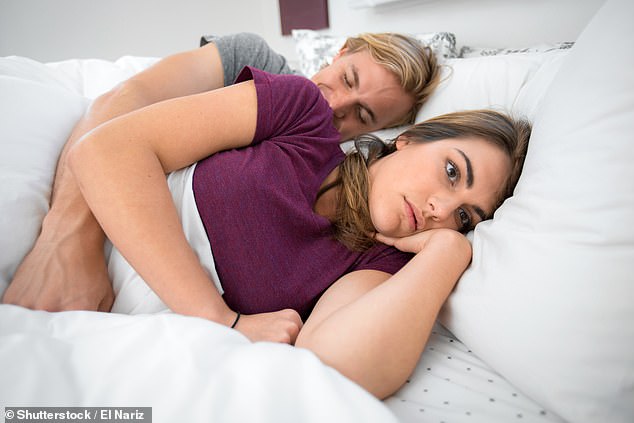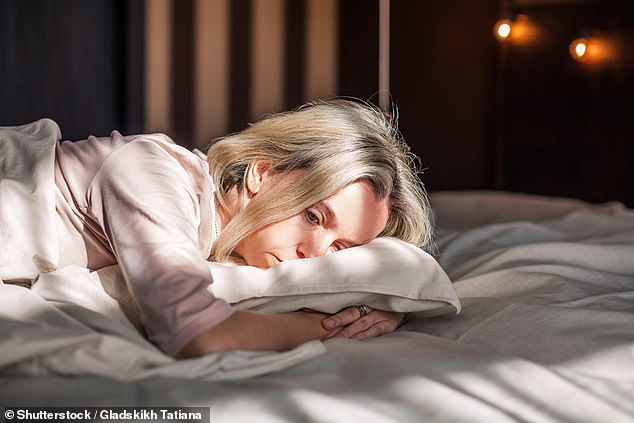If “early to bed, early to rise” sounds like hell: how to train a night owl to get up like a lark!
Read any interview with an Olympian, top entrepreneur, or high-flying entrepreneur and they’ll likely reference getting up at the crack of dawn, whether they’re training, meditating, or starting to fire off emails.
The idea that ‘the early bird catches the worm’ has such a hold on society that getting up early at 5am has become a semaphore for good health and great success – even those of us who prefer to sleep in, are lucky enough to set an alarm until well after 7am, thanks to the timing of an average workday.
But in fact, experts say that only 5 to 10 percent of people are true “larks” (early to bed and early to rise), with most (myself included) preferring to both go to bed and wake up later. to stand.
The bad news is that we night owls (going to bed late and waking up late) can be at a serious disadvantage when it comes to long-term health.
A study published last week in the Annals of Internal Medicine suggested that late types are 19 percent more likely to develop type 2 diabetes than early birds.
LIBBY GALVIN (PHOTO): The bad news is that we night owls (going to bed late and getting up late) may be at a serious disadvantage when it comes to long-term health
The study, conducted at Brigham and Women’s Hospital in Massachusetts, looked at the health outcomes of nearly 64,000 middle-aged female nurses over an eight-year period and also found that those who described themselves as night owls were 54 percent more likely to have unhealthy lifestyle habits, including smoking, insufficient sleep and little physical activity.
The good news is that it might be possible to ‘retrain’ yourself to a healthier sleep type.
Each of us has a ‘chronotype’ – also called circadian preference – which refers to our preferred timing of sleep and wakefulness.
This is largely genetic, but can be dynamic as it is also influenced by factors such as our hormones (more on that later). Our chronotype lies on the spectrum between a lark and an owl. Intermediate species are known as pigeons.
Russell Foster, professor of circadian neuroscience and head of the Sleep & Circadian Neuroscience Institute at the University of Oxford, explains: ‘Our internal clocks – located in our suprachiasmatic nucleus (SCN), an area deep in the brain – are set to cycle of approximately 24 hours.
‘However, it only lasts about 24 hours: depending on the individual, they tap a little faster or a little slower. These differences are caused by changes in one or more of our clock genes.’
This wide distribution of sleep-wake times is specific to humans, he says, and is thought to be adaptive: “In early human societies, it would probably have been very useful for tribes to keep a certain portion of their population awake at different times.” to have. of the day.’
These days, however, being a night owl can be a burden. But it is possible to change your chronotype to better suit modern life – within reason.
Experts say it can only last a few days if you stick to a strict regimen. Our sleep-wake times have about two hours of ‘flex’ built into them – so if you’re a night owl, going to bed at midnight and waking up around 8am, you can realistically become a lark who happily goes to bed around 10pm and wakes up at Get up again at 6:00 am. .
Professor Foster says: ‘With a good routine and commitment to early light exposure, this degree of change in your chronotype is realistic.’
But he adds: ‘Sleep is as fundamental (to our existence) as being awake. I see that it would be much more convenient for many people today to have a high inclination, but that should not be at the expense of sleep duration.’
I definitely think I’d be better off as a lark. I am a late born type and have always had a difficult relationship with sleep, because for years I have not been able to balance my inability to fall asleep on time and the need to get up early for school and later for work .
Now, added to the mix, I have a six-month-old who likes to start the day anywhere between 4am and 6am – and I’d like to greet the morning with as much enthusiasm as he does.

Each of us has a ‘chronotype’ – also known as a circadian preference – which refers to our preferred timing of sleep and wakefulness (stock photo)
But before you try to change your chronotype, it’s important to understand the factors that shape it.
‘The first is your genes,’ says Professor Foster. ‘There are subtle changes in the clock genes, Per and Cry1, that can speed up or slow down our internal master clock, the SCN.’
“Second, our chronotypes change over time, from childhood to old age,” he adds.
‘From the age of about ten you tend to want to go to bed later and later.
‘Then from your twenties there’s a slow shift to more of a morning type, and by the time you’re in your late fifties, early sixties, you’re getting up and going to bed around the time you did. a pre-teen.”
This equates to a difference in ideal sleep and wake times of two hours on average – meaning that if you went to bed at midnight in your 20s, 10pm will feel more natural in your 60s.
This change is linked to the change in hormonal levels that accompany puberty: ‘The sex steroids – estrogen in women and testosterone in men – work together with the master clock in the brain,’ says Professor Foster.
Since I’m breastfeeding, my estrogen levels are probably quite low – so maybe that would make mornings easier for me at this point, I wonder. Professor Foster supposes that this could very well be the case.
Excellent news – this should make my journey from owl to lark easier.
The third and most important factor to consider when changing your chronotype is light exposure.
Light ensures that our 24-hour body clock keeps time, enters through the eyes and sends signals to the SCN via the retina.
‘The most important thing to remember is that morning light sets the clocks forward,’ says Professor Foster.
‘So if you want to train yourself to be a lark, go outside in the morning light as soon as possible after sunrise, for at least 30 minutes; you will find it easier to go to bed earlier and get up early the next day. Exposure to light at dusk has the opposite effect.’
And simply sitting by a window isn’t enough when it comes to becoming “more of a lark” – and neither is turning on the light.
‘We have data showing that just 30 minutes of light at 10,000 lux can have an effect on our brains, but average lighting conditions in the home are around 100 lux, office lighting is maybe 400 lux, so we are essentially living in dim, dark conditions. caves,” says Professor Foster.
He suggests using a lux meter (about £15 online; free via an app on your phone) to assess the lighting conditions in your home. To really make you feel bright-eyed and bushy-tailed, add some exercise: ‘Exposure to morning light and exercise can work synergistically,’ says Professor Foster.
He adds: ‘There is some evidence that the timing of exercise will also shift the clock – and that morning exercise is good for your metabolism.’
Would making these kinds of changes help me? I decided to try it out for a month. It turns out I had a secret weapon: my cocker spaniel Vincent.

Simply sitting by a window isn’t enough when it comes to becoming ‘more of a lark’ and sleeping earlier – and neither is turning on the light (stock photo)
‘There is data to suggest that people who own dogs have better sleep-wake patterns,’ says Professor Foster.
One theory is that this is because you have to get up in the morning and take them out. “And then you get a ‘photon shower’ (rain of light particles),” he explains.
The first morning I followed Professor Foster’s advice and threw open the curtains at dawn: but the light on that cloudy day was only 410 lux. Even outside on my terrace it was only 3,426 lux.
This suggests that in Britain even a half-hour outdoor photon shower may not be enough, especially as we head into winter.
‘The solution might be to use a light box,’ says Professor Foster, ‘and have breakfast there.’ (Popular models cost around £60 to £90.)
In addition to throwing open the curtains and heading out to the patio first, I also try to take a dog walk early — well before noon — and go to bed at a respectable 10 p.m. (okay, sometimes closer to 10:59 p.m., in instead of my standard midnight-ish).
After a month, while my chronotype hasn’t completely changed – partly because a new baby makes my nights so unpredictable – on the days I can stick to my ‘lark’ routine, I feel so much better and notice it the next morning – and the next, and the next – significantly easier.
The key is consistency, says Professor Foster. But I know the darkening mornings will make it difficult to keep the momentum going. Time to take a look in that light box…
